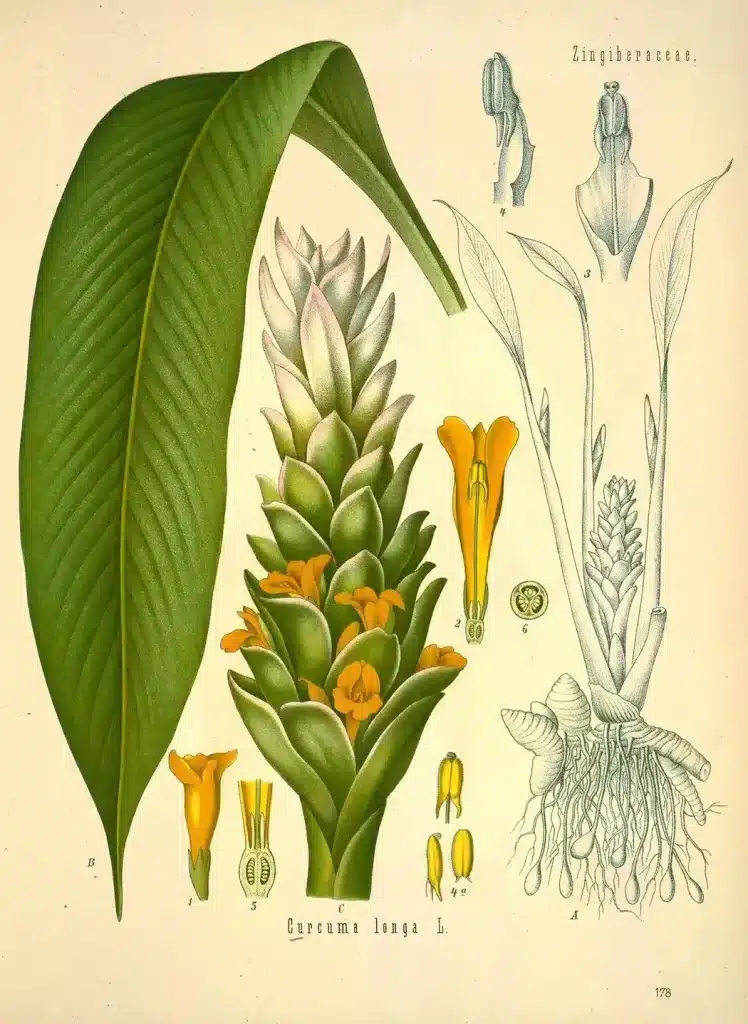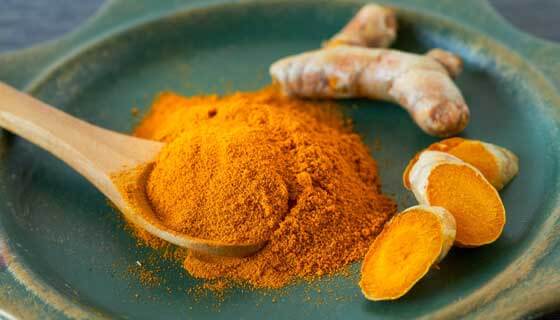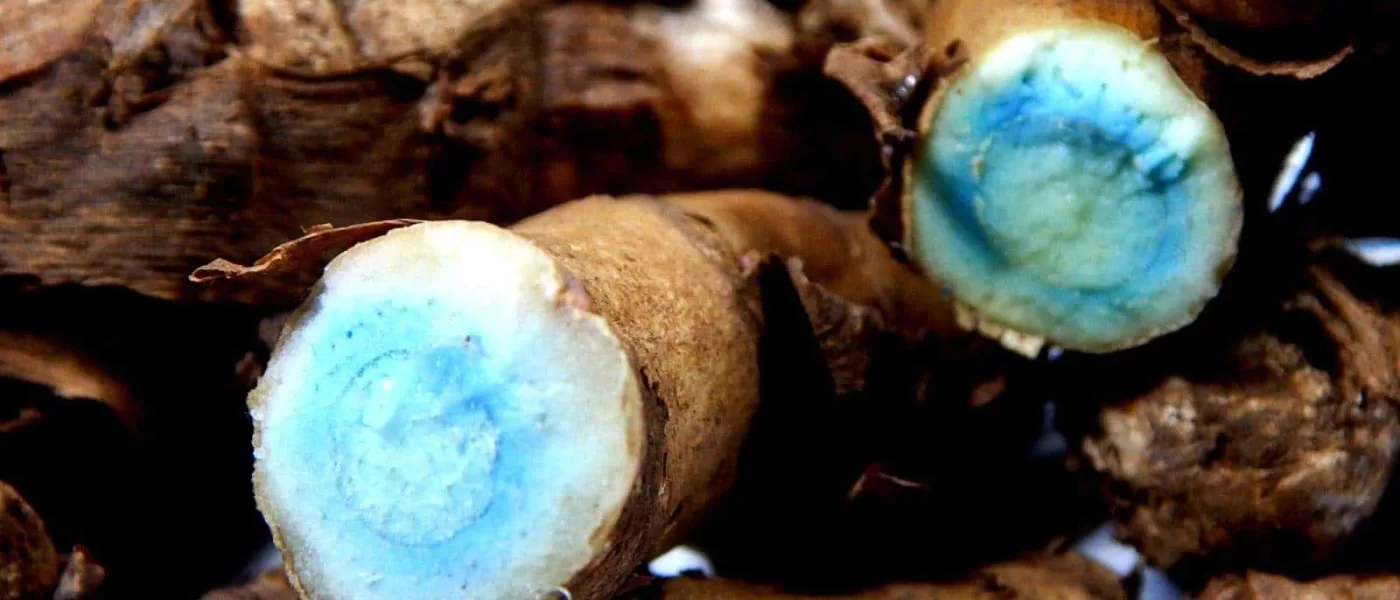
The Best Ways to Fight Inflammation with Turmeric | Voyage Through
Turmeric, a revered spice known for its myriad health benefits, has been used for centuries in Ayurvedic and alternative health practices. This article will explore the various forms of this potent root, including black turmeric, a variant known for its high curcumin content and distinct color. We will delve into the debate of ground turmeric powder vs extract, examining the benefits and drawbacks of each. You might have seen turmeric extract on Amazon and wondered about its efficacy – we’ll provide insight into this as well. Plus, we’ll discuss the superiority of turmeric extract drops as a delivery method, suggest our favorite turmeric extract available on amazon, specifically sublingual ones, and their potential in managing inflammation and boosting brain health.

History of Tumeric
Turmeric is believed to have originated in the regions of South or Southeast Asia, with a high likelihood of India being its birthplace due to the ideal tropical conditions. Its vibrant color and unique flavor have made it a staple in many cuisines, but it’s the potential health benefits that have garnered significant attention in recent years.
The history of turmeric is both extensive and impactful, unraveling over a period of more than 4000 years. Considered a holy spice in India and used in religious ceremonies, turmeric, or ‘haldi’ as it is known locally, is a vital element in Ayurveda, the system of traditional Indian medicine. Historical evidence traces back its use to as early as 2500 BCE where its medicinal properties were first documented in the sacred Ayurvedic texts.
This spice was revered for its healing powers, treating everything from respiratory conditions to wounds and injuries. The bright yellow hue of turmeric also led to its use as a dye for clothes and threads, particularly for those worn during religious ceremonies.
In the thirteenth century, the explorer Marco Polo encountered turmeric while on a mission in China, where it was described as resembling saffron. This discovery brought the spice back to Europe, where the Europeans were captivated by its potential and began to cultivate it, resulting in its widespread distribution throughout the continent. Nevertheless, the journey of turmeric to the West was not an easy one. Turmeric was often mistaken for saffron because of its similar, vibrant hue, leading to it being referred to as Indian Saffron.
During the colonial era, turmeric was transported to the Caribbean and American continents, where it was embraced for its culinary and medicinal properties. The spice gradually made its way into the Western pharmacopoeia and was acknowledged for its anti-inflammatory and antioxidant capabilities.
Related Blog: Lovely Vintage Japanese Onsen Spa in Santa Cruz

Turmeric Today
In the 20th century, modern science identified curcumin as the primary active compound in turmeric. Fighting chronic pain naturally requires fighting inflammation. Numerous studies have since been carried out globally on this potent compound, echoing the age-old beliefs of Ayurvedic philosophy. Today, turmeric continues to be subjected to rigorous scientific studies and clinical trials, confirming its potential in managing a range of health conditions.
In contemporary times, the charm of turmeric transcends the boundary of the kitchen. Its inclusion in skincare products, supplements, and even in ‘turmeric lattes’ at trendy cafes emphasizes the enduring appeal of this golden spice.
As the popularity of natural and alternative health solutions has surged, turmeric has gained significant acclaim. Its principal active compound, curcumin, is often lauded for its potent anti-inflammatory and antioxidant properties, making it a popular choice for those seeking a natural remedy for a host of ailments. From its use as a dietary supplement to its incorporation in topical creams, turmeric’s versatility is a major factor in its widespread application.
In the realm of alternative health, turmeric is widely used in supplement form to help manage conditions such as arthritis due to its anti-inflammatory properties. Its potential benefits extend to brain health as well, with some studies suggesting it may improve memory and boost mood by increasing levels of the brain hormone BDNF. The antioxidant qualities of turmeric also make it a popular choice for those looking for natural ways to combat the effects of oxidative stress and aging.
In addition to its internal use, the topical application of turmeric has also gained popularity. Many skincare products now incorporate turmeric due to its potential to improve skin health, thanks to its antioxidant and anti-inflammatory capabilities. Turmeric face masks, for instance, are a popular DIY skincare treatment, believed to help with acne, dark spots, and skin brightening.
Despite its popularity, it’s important to note that while the potential health benefits of turmeric are promising, more comprehensive studies are needed to substantiate many of these claims. Nevertheless, the golden spice continues to hold a revered place in the realm of alternative health, symbolizing a bridge between ancient wisdom and modern wellness trends
The Science of Turmeric
Turmeric contains several chemical compounds, collectively known as curcuminoids. The most notable among these is curcumin, which is recognized for its potent anti-inflammatory and antioxidant properties. Despite making up only about 3% of turmeric by weight, curcumin is believed to be largely responsible for the numerous health benefits associated with turmeric.
Inflammation is a natural response by the body’s immune system to injury or illness. While acute inflammation can be beneficial in healing wounds or fighting infections, chronic inflammation is linked to various serious health conditions, including heart disease, cancer, and Alzheimer’s disease.
Research finds that the natural occuring curcumin in turmeric is of the best natural supplement extract at helping combat inflammation at a molecular level.
It has been found to block NF-kB, a molecule that travels into the nuclei of cells and turns on genes related to inflammation. Curcumin’s ability to inhibit this key molecule makes it a powerful tool in managing chronic inflammatory conditions.
Turmeric has been found to be effective in treating inflammation related to various conditions. For instance, studies have shown that it can reduce symptoms of arthritis, often performing as well as some anti-inflammatory drugs. Additionally, it may aid in combating inflammation in the digestive tract, providing relief for conditions like inflammatory bowel disease. There’s also evidence suggesting that topical use of turmeric can alleviate inflammation related to skin disorders.
Turmeric Extract vs Powder
In terms of administration, sublingual turmeric drops have emerged the most effective delivery method. Sublingual administration involves placing the drops under the tongue, where they are rapidly absorbed into the bloodstream through the mucous membranes. This method bypasses the digestive system, increasing the bioavailability of curcumin and allowing for more immediate effects. The science points to sublingual extract drops as the best turmeric for inflammation
While other forms of turmeric supplements, such as capsules or powders, are available, they often contain additives and require digestion before absorption. In contrast, high-intensity sublingual drops provide a more direct and efficient delivery of curcumin, making them a superior choice for those seeking to harness the full benefits of turmeric. In addition, they are easy to use and have no adverse side effects. For these reasons, sublingual turmeric drops may be the ideal way to make the most of this powerful herb’s medicinal properties.
Turmeric Drops are the Best
By leveraging the potential of turmeric, sublingual drops provide a convenient and efficient way to experience the health benefits associated with this natural remedy. From reducing inflammation to combating digestive issues, these potent drops offer a range of applications that make them an invaluable tool in any wellness routine. Plus, they are easy to find online on amazon and beyond. With their ease of use and lack of side effects, they’re also ideal for those looking to incorporate turmeric into their daily regimen. As research continues to elucidate the many benefits of this ancient spice, sublingual turmeric drops provide an effective way to take advantage of its potential and promote overall health and well-being.

What about Black Turmeric?
Black turmeric, also known as Curcuma caesia, is a variant of the turmeric family that is distinguished by its deep blue or black color and a stronger, more pungent smell compared to the commonly used yellow turmeric. So is Black Turmeric the best turmeric for inflammation?
Black Turmeric’s high concentration of curcumin is responsible for its deep color.
Therefore, this variant is considered stronger as an anti-inflammatory agent, and it’s believed to have certain neuroprotective properties. Yellow turmeric also possesses anti-inflammatory and antioxidant properties due to the presence of curcumin, but the concentration is not as high as in black turmeric. However, yellow turmeric has a wider range of applications, from food to cosmetics and even fabric dye.
Black turmeric’s curcumin is a powerful bioactive compound that can inhibit the activity of enzymes and proteins that contribute to inflammation in the body. It can block NF-kB, a molecule that activates genes linked to inflammation at the cellular level. Furthermore, black turmeric contains antioxidants that can counteract oxidative stress, a key factor in chronic inflammation. As such, incorporating black turmeric into your regimen can potentially help manage inflammatory conditions and promote overall health.
Black vs Yellow Turmeric
In comparing the anti-inflammatory benefits of black and yellow turmeric, black turmeric does appear to have the edge due to its higher curcumin content. With a higher concentration of curcumin, black turmeric offers more potent anti-inflammatory effects, making it potentially more effective at managing inflammatory conditions. However, it’s worth noting that Black Turmeric is far less ubiquitous than yellow turmeric perhaps because it is not used in cooking near as much. As such, its harder to find strictly black turmeric products. Amazon does not carry a pure Black Turmeric extracts but there are several good powder options and since curcumin is concentrated higher, the powder is a much more effetive supplement than its yellow counterpart.
As always, it is advisable to consult with a healthcare provider before making substantial changes to one’s wellness regimen.
Our Recommended Sublingual Turmeric Drops
I use E2H Liquid Turmeric Curcumin daily. Each serving delivers a powerful dose of curcumin. What sets the E2H Liquid Turmeric Curcumin apart is its liquid extract form, significantly enhancing curcumin’s bioavailability, hence boosting its absorption rate in the body. This ensures that users can fully reap the benefits offered by this health-enhancing compound. Moreover, E2H’s product features an easy-to-use dropper, making it convenient to measure and consume.
Endorsed by legendary pro skater Tony Hawk, The Qunol Liquid Turmeric Curcumin 1000 Milligram, available for purchase on most online platforms, is a powerful health supplement aimed at enhancing your wellness regime. With a whopping 1000 milligram of Curcumin in each serving, this product offers highly potent anti-inflammatory and antioxidant properties.
Its liquid form further enhances the bioavailability of curcumin, allowing for efficient absorption by the body. In comparison to capsules or powders, the liquid form ensures that more curcumin is available for your body to use. Qunol’s product is also formulated with an extra-strength turmeric complex that has been clinically proven to provide superior absorption compared to regular turmeric pills.
It is water-soluble, meaning it can be mixed into your favorite beverages or meals for a simple and effective addition to your day.
The Retract To Nature Black Turmeric Powder, available on Amazon, offers a convenient way of incorporating the numerous health benefits of black turmeric into your diet. Known for its high curcumin content, this product boasts potent anti-inflammatory and antioxidant properties. Sourced ethically and processed with minimal intervention, it preserves the natural constituents of the herb, offering a pure and potent product. The powder form provides versatility for usage, allowing it to be easily integrated into various dishes, beverages, or even used as a dietary supplement.
Footnotes
Therapeutic roles of curcumin: lessons learned from clinical trials ↩
Curcumin blocks NF-kB and the motogenic response in Helicobacter pylori-infected epithelial cells ↩
Efficacy and safety of curcumin in major depressive disorder: a randomized controlled trial ↩
Effects of turmeric on Alzheimer’s disease with behavioral and psychological symptoms of dementia ↩
Turmeric and its active compound curcumin: Promising agents against psoriasis and other skin diseases ↩
Enhanced bioavailability of curcumin in the near future: the potential of polymeric micelles ↩






